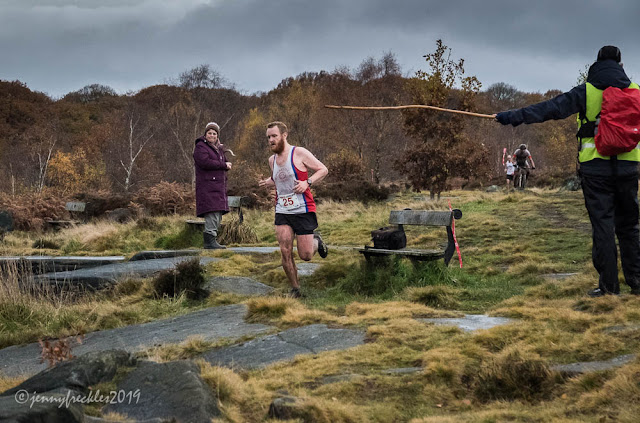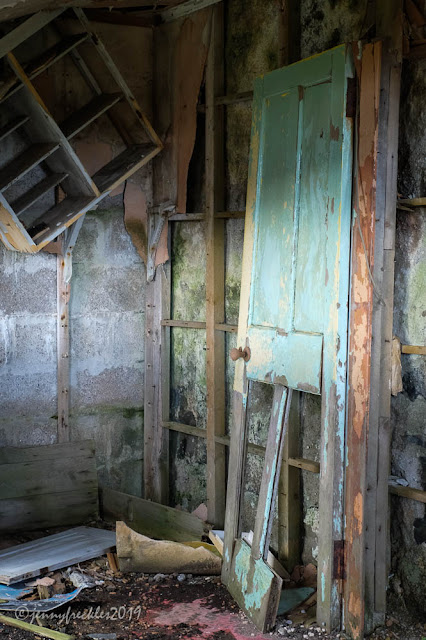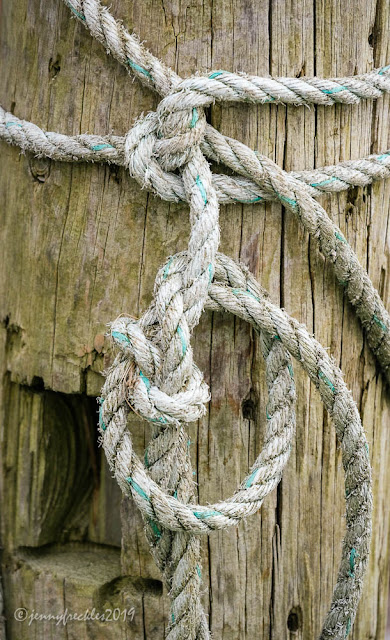Pages
Saturday, 30 November 2019
Leathley
On my regular jaunts to RHS Gardens at Harlow Carr, I drive through a pretty little village called Leathley, near Otley. I always think I'll stop and explore... and I never do. Well, one day in early November I did, because the sun was shining and bringing out all its beauty. I used my phone to take a picture of the church and the sun promptly disappeared behind a cloud - and then the rain started! So I didn't get far in my exploration.
The building that catches my eye when I drive through is the row of almshouses (above) which have a beautiful view across the Wharfe valley. I've found online a conservation area study, which tells about the history of the area. This has aways been predominantly an agricultural area. It has various links over the years to nearby Farnley Hall (see HERE). The almshouses date back to 1769, when a school house (the two-storey bit in the middle) and four almshouses were built in memory of Henry Hitch, the lord of the manor, to care for the poor of the parish and to educate the children.
The church of St Oswald sits proudly on a hillock. It originally dates back to the 1100s with additions in the 1470s and Victorian renovations. The beautiful carved cross is a war memorial.
(Note to self: make sure you take a proper walk in this area next Spring! There seems to be lots more to discover.)
Labels:
almshouses,
church,
Leathley,
Otley,
Wharfedale
Friday, 29 November 2019
Harriers v Cyclists
I was negotiating my way along the rather muddy and slippery moorland at the top of Shipley Glen, when I noticed a skein of brightly coloured vests ahead of me - runners and cyclists. I was just too late to see exactly what was going on but then later, as I turned round to return the way I'd come, they also returned and passed me. I realised it was the annual 'Harriers v Cyclists' race, organised by Bingley Harriers running club.
They start at the Fisherman Pub on the canal, following a course through the Milner Field estate, across Loadpit Beck by the mill pond, through Shipley Glen and up the steep bank to Glen Road (where I took these photos). Their route, a little over 5 miles (8 km) in total but with a steep 300m climb, then circles round Hope Hill on Baildon Moor and back along the same path into the valley. They compete for the Fisherman Trophy. The course record is around 34 minutes. This year, the fastest male runner (Nathan Edmondson) completed it in 36 min 01.7 sec and the fastest cyclist (David Mirfield) in 36 min 56.7 sec, so there is not much in it. The fastest women clocked 43:43 running and 58:25 cycling. Most of the cyclists I watched dismounted at the top of the steep bank where I photographed them, which I suppose slows them down a little. Getting filthy and bruised is one thing, but risking your neck is another, I guess.
I felt a little crazy to be out walking on such a gloomy and damp day, but there are many folk who think nothing of spending their weekends getting all muddy and wet in the name of sport!
The chap with the stick was a marshal showing the competitors where the route down the crag face started, as it is quite hard to see - not really a path, more of a scramble.
Thursday, 28 November 2019
On the edge
What with my cataract surgery and the endless rain, I've stayed close to home for most of November. Thankfully this area has not suffered floods, though further south around Doncaster the flooding has been catastrophic. After a while, my need just to get out and breathe the fresh air got the better of me so I ventured up to the top of Shipley Glen for a walk along the edge. Muddy and damp it may have been but I enjoyed it. The trees still held a little autumn colour. Some on the hillside are tall enough nowadays to block the view but every now and again a vista opens up and you can see across to the other side of the Aire valley.
Wednesday, 27 November 2019
A ride up the Tramway
Every weekend, the dedicated team of volunteers at the Shipley Glen Tramway crank up the mechanisms and keep the trams running. Since 1895 the two cable-driven cars have transported thousands of visitors up and down the steep hillside at the back of Saltaire's Roberts Park, to enjoy the fresh air and moorland views. At one time there was a funfair up there, with lots of exciting rides. Nowadays there is just moorland with some good walks and plenty of rocks for children to scramble on (and a convenient pub for refreshment).
I usually make myself walk up the hill, along the steep path at the side of the Tramway, simply for the health benefit. Every now and again, I pay my £1 for the privilege of a ride just to help keep the tramway going. It would be such a shame if it closed but it exists on a shoestring. The December 'Santa Specials' are probably all that keeps it viable.
Tuesday, 26 November 2019
Reverse photo-bombing
We're all familiar with 'photo-bombing', when an unexpected/unwanted person or animal sneeks into your shot... I wonder if there is a reverse equivalent, when an unexpected (possibly unwanted) photographer sneeks into your photoshoot? That's what I did the other day, on my way into the annual Peace and Crafts Fair in the Victoria Hall.
Father Christmas is often to be found hanging around at the event. I think he must pick up a few stocking fillers there. As I walked past, a group of friends had invited him to feature in their photo. It seemed a good opportunity to take a quick snap myself! He seems to have suffered, like all of us, from a little austerity over the past year - beard and fur not nearly as luxuriant as last year and he himself looks even leaner (compare HERE).
It's all a bit of fun at this time of year. The Peace and Crafts Fair is indeed a good place to stock up on cards and gifts, ready for the festive season, often supporting charities in the process.
Labels:
Christmas,
event,
people,
Saltaire,
Victoria Hall
Monday, 25 November 2019
More gold
Autumn seemed to start a little early but slowly this year. Then, as the nights got colder, we did see some wonderful colour develop. One of the best places locally to enjoy the varied hues is along the stretch of canal that goes through Hirst Wood. It's a pleasant circular walk of a mere three miles to go out from Saltaire along the canal towpath and return through the ancient woodland itself. Again, these are just phone snaps, but I think they still show how lovely it all looked. With the benefit of cataract surgery (and really appreciating the privilege of having it done on the NHS, so skilfully and with so little fuss) I am looking around me with a renewed sense of awe and gratitude for the glorious world we live in.
Sunday, 24 November 2019
All is pure gold
So... I hope you enjoyed my holiday photos - and here I am back again, posting 'live' and with photos I've taken over the past couple of weeks. Much of November has been spent taking care of my eye after the cataract surgery. Endless amounts of eye drops to apply! It was all extremely easy and painless though. I was amazed that the surgery itself only took about 15 minutes and was quite fascinating, watching a kaleidoscope of lights and colours as my old lens was swapped out for a new one. Once the anaesthetic wore off and my pupil returned to a normal size, I found I could see perfectly well with my existing glasses. There are various warnings against driving and a plethora of other things: no dusting or hoovering (yay!); no lifting; no swimming; no makeup or creams on face; careful hair washing; no rubbing your eyes; try to avoid coughing and sneezing! Everything does look sharper and brighter, especially if I close the other eye (which in comparison now makes everything look rather yellowed). The best bit is that lights at night, which were very glaring, now look much more bearable, so that will make driving after dark a great deal safer. In January, I've to go through the whole procedure again with my other eye so it will be weeks yet before it all settles down enough to get my eyes tested to see if I really need glasses, and if so whether I need a new prescription.
Shortly after the op, I gave in to a head cold that has been nudging at me for ages. I didn't want to sneeze in the middle of the delicate surgery (!) and I'd managed to keep it at bay beforehand with a mix of vitamins, echinacea and antiseptic gargles. It never got fully scared off, so I decided to let it overtake me and snuggled up with a few good books and the TV for a few days, sniffling and dozing. Every now and again, I think, one just needs to stop and rest so that's what I've been doing. I feel much better now.
I left my camera behind on the short walks I've done, just using my phone to take photos. One day I wandered in the grounds of Saltaire's URC church, alongside the canal. There are some wonderful, mature beech trees there so the ground was literally a carpet of gold. Adjacent to the churchyard, the buildings that make up the old stable block (see above), which are just cottages really, look from this angle rather like a grand mansion. Sir Titus Salt certainly had a bold vision for his village, and we still reap the benefit more than a century and a half later.
Saturday, 23 November 2019
The Callanish Stones
Harris, day five
The Callanish Stones are perhaps the most famous visitor attraction on Lewis. It's a complicated site, consisting of three separate stone circles and some avenues of stones, believed to date back to between 2900 and 2600 BC, making them about the same age as Stonehenge. They are of a simpler construction, consisting of standing stones without any lintels.
It is believed to have been used as a Bronze Age ritual site and a little later a burial chamber was added, which was used for many centuries. The whole site fell out of use around 1000 BC and was then used for agriculture, being completely abandoned in around 800 BC and eventually buried under peat. It was cleared of peat in the late 1800s and taken into protective care.
The Gneiss markings make each stone very attractive and the whole site is quite awesome.
We were privileged to enjoy the sunset at the main stone circle, a powerful and beautiful experience, despite a little drizzle. Our final sunset of a memorable trip - most poignant...
Friday, 22 November 2019
Gneiss beaches
Harris, day five
We spent the afternoon in Lewis on a couple of (very Gneiss) beaches, one stony and one sandy. The local rock is Lewisian Gneiss, a metamorphic rock that, at 3 billion years old, is reckoned to be the oldest rock in Britain and one of the oldest in the world, two thirds the age of the earth. See HERE for a more detailed explanation. It is very attractive, with multi-coloured layers and patterns. I love pebbles, there's something so tactile about water-smoothed stone and I was tempted to put a couple in my pocket. (I know you shouldn't!) It was mainly the thought of my luggage allowance on the flight back that stopped me!
Wherever, there are stones, someone will have balanced a few...

 I was fascinated by the patterns in the peaty water of a small stream running across the beach to the sea.
I was fascinated by the patterns in the peaty water of a small stream running across the beach to the sea.Thursday, 21 November 2019
The preserved village
Harris, day five
On our trip to Lewis, we also paid a short visit to Geàrrannan blackhouse village. These traditional blackhouses were abandoned in 1974, when the residents were moved to more modern social housing nearby. They are only about 150 years old, but built in a very traditional croft style that was once common in the Scottish Highlands, Hebrides and Ireland. Since these at Geàrrannan were the last blackhouses in Lewis to be vacated and they sit in such an attractive setting overlooking a stony beach, the decision was taken to make this a conservation area. In 1991 a programme of restoration was undertaken. Now, there is a museum and some holiday accommodation within the carefully restored village, where modern amenities have been discreetly integrated.
The buildings have double-skinned drystone walls with earth packed between them, and roofs made of straw thatch and turf, anchored with ropes and stones to withstand the harsh Atlantic gales. Fires would have burned peat and originally the smoke was left to find its way out through the thatch. The houses are long and would have accommodated families at one end and animals at the other, separated by a thin partition.
Wednesday, 20 November 2019
The ruined croft
Harris, day five
On our last full day, we drove north to the adjoining island of Lewis. Both Harris and Lewis are dotted with abandoned crofts, left either as a result of depopulation or perhaps simply because the original residents moved into newer accommodation. Many of them are too dangerous and dilapidated to venture too close, but we did find one at Arivruaich that you could walk down to.
A once substantial dwelling, it was set in a small hamlet with a few other houses and a postbox. One wonders if the inhabitants mind the view of a decaying cottage?
For photographers, it was, of course, a dream location, with a sea loch behind and lots of details: sagging outhouses with rusty corrugated iron roofs...
... rotten window frames with sad fragments of lace curtains that must once have been chosen with pride...
... the decaying remains of a bathroom, the bath and sanitary ware still in situ, although the ceiling was caving in, the walls were bare and the floor was dangerously rotten...
... and of course, when man leaves, nature rushes in so that wild plants were recolonising the boggy ground.
Tuesday, 19 November 2019
Pastel tones
Harris, day four
We spent late afternoon on day four on Scarista beach, a long crescent of pale sand in the shadow of Ceapabhal. The beach faces north and the sunset unfolded gradually in a series of pastel hues. I was busy again with my ND filter to smooth the water. The top photo is without it and the one below is using it to give a 1.5 sec exposure. Sometimes I prefer one and sometimes the other!
As the light faded the hills of Taransay across the Sound were tinted pink:
The clouds, lit by the setting sun, were a gentle fire of blues, greys, corals and pinks:
Monday, 18 November 2019
The harbour
Harris, day four
A little further beyond the church is the village of Rodel, once the historic capital of Harris, situated around a harbour that used to host the Skye ferry. Those accolades now fall to Tarbert and Rodel is much more tranquil.
I really enjoyed taking a few 'mini-landscape' shots here. There was much to inspire me: old boats, rusty chains, knotted ropes, seaweed and lichen. Some lovely colours too...
For some reason I can't quite define, this shot of seaweed caught in a gap in the decaying harbour jetty is probably one of my favourite images of the whole trip. The shapes and colours just seem very pleasing to me. I think it's an archetypal feminine image in some senses - a bit Georgia O'Keefe, albeit not a delicate flower.
Subscribe to:
Comments (Atom)

















































